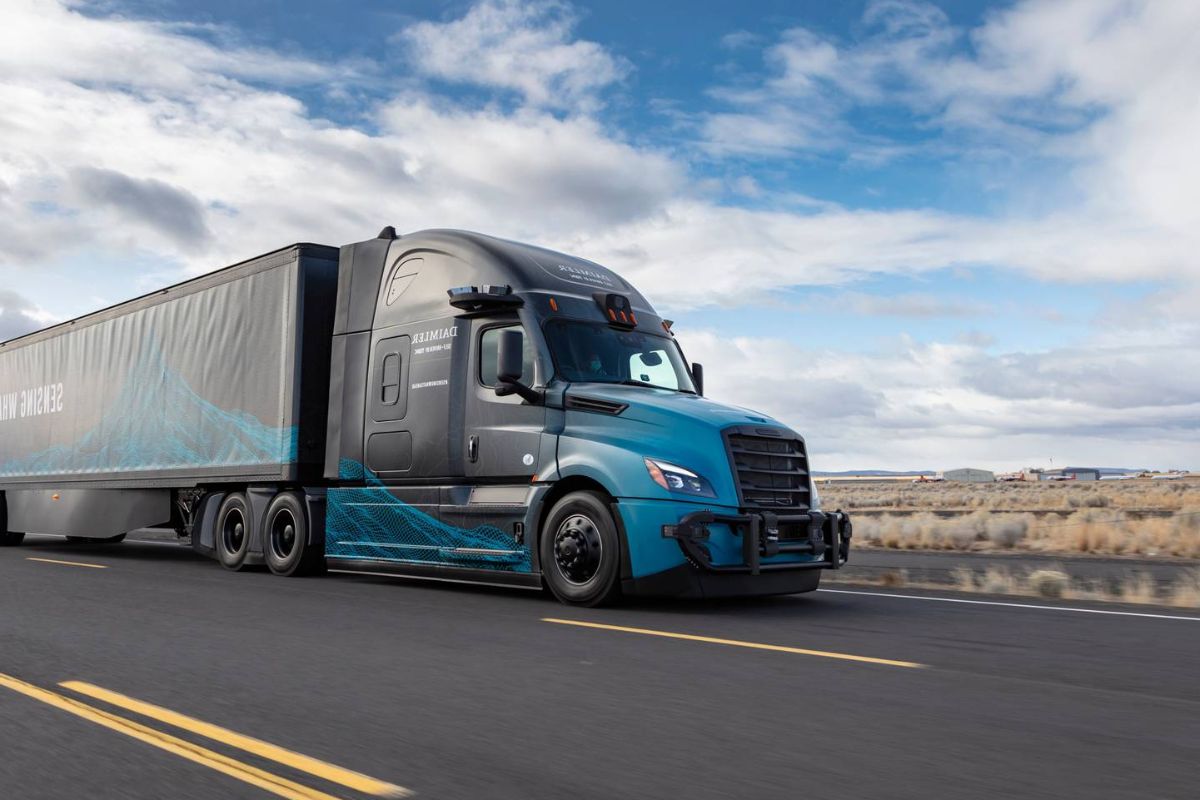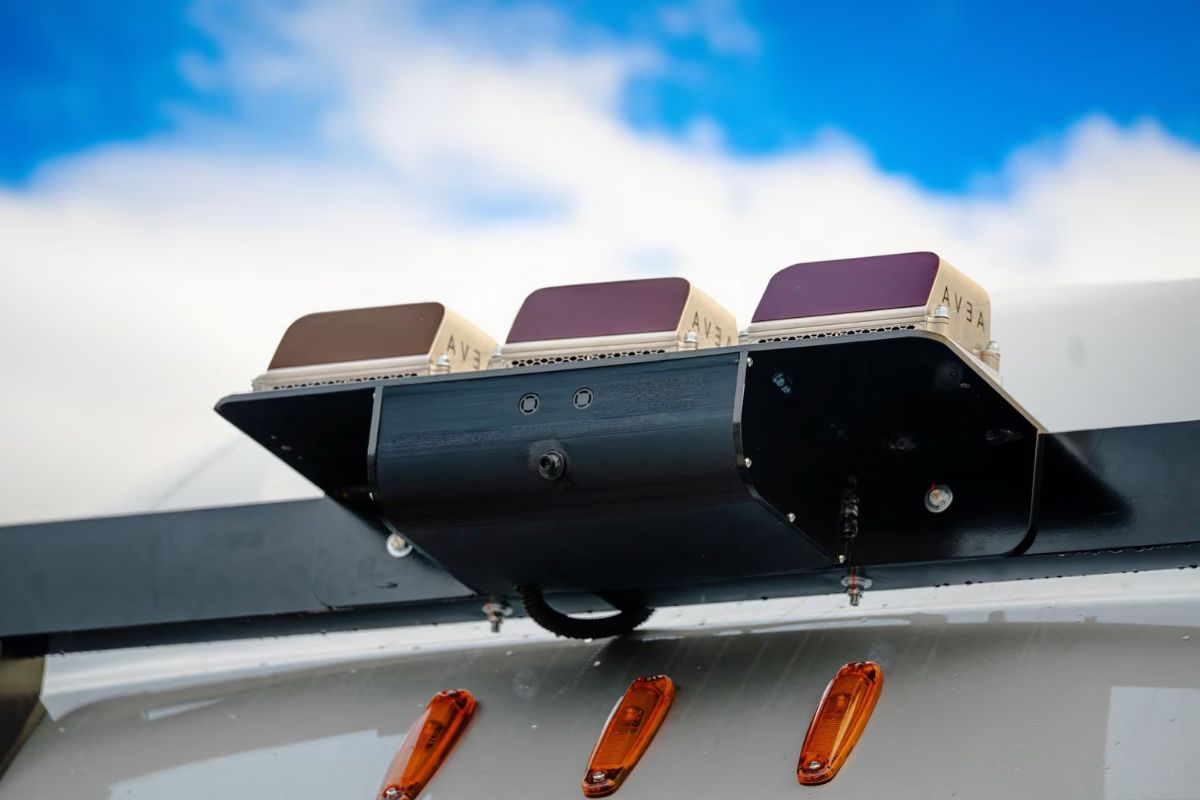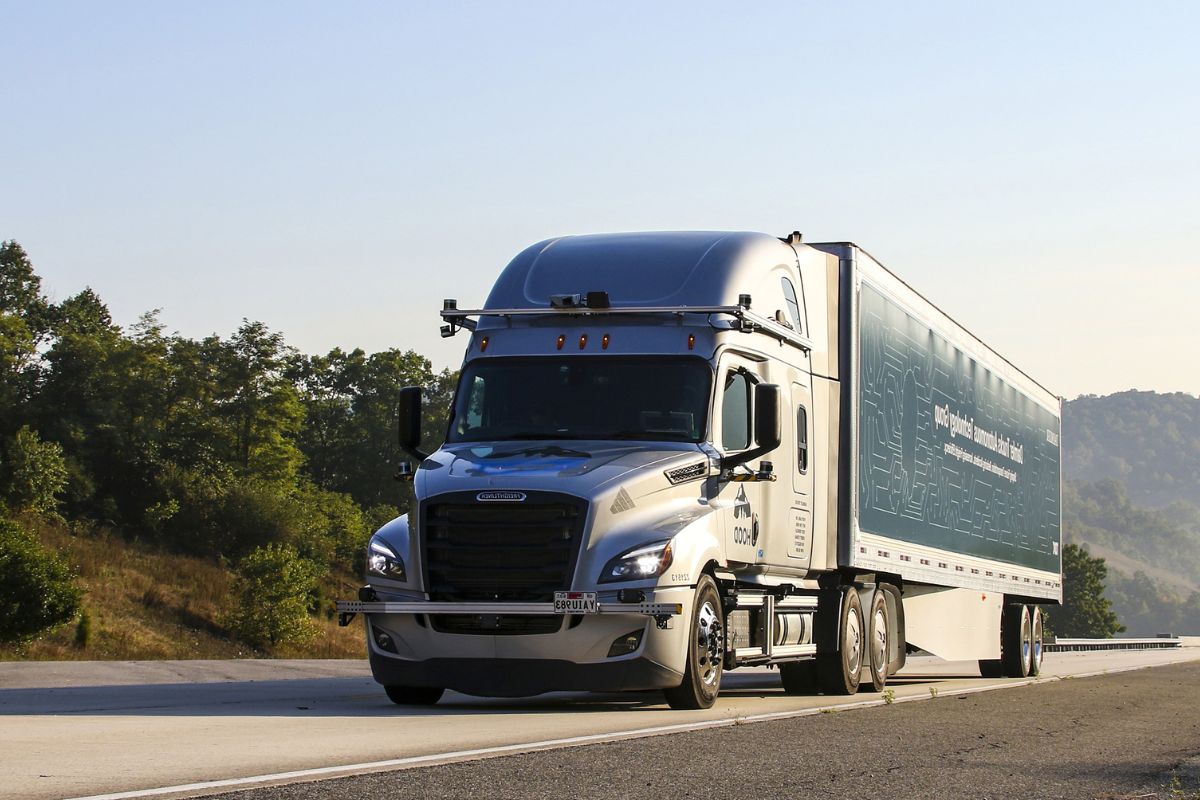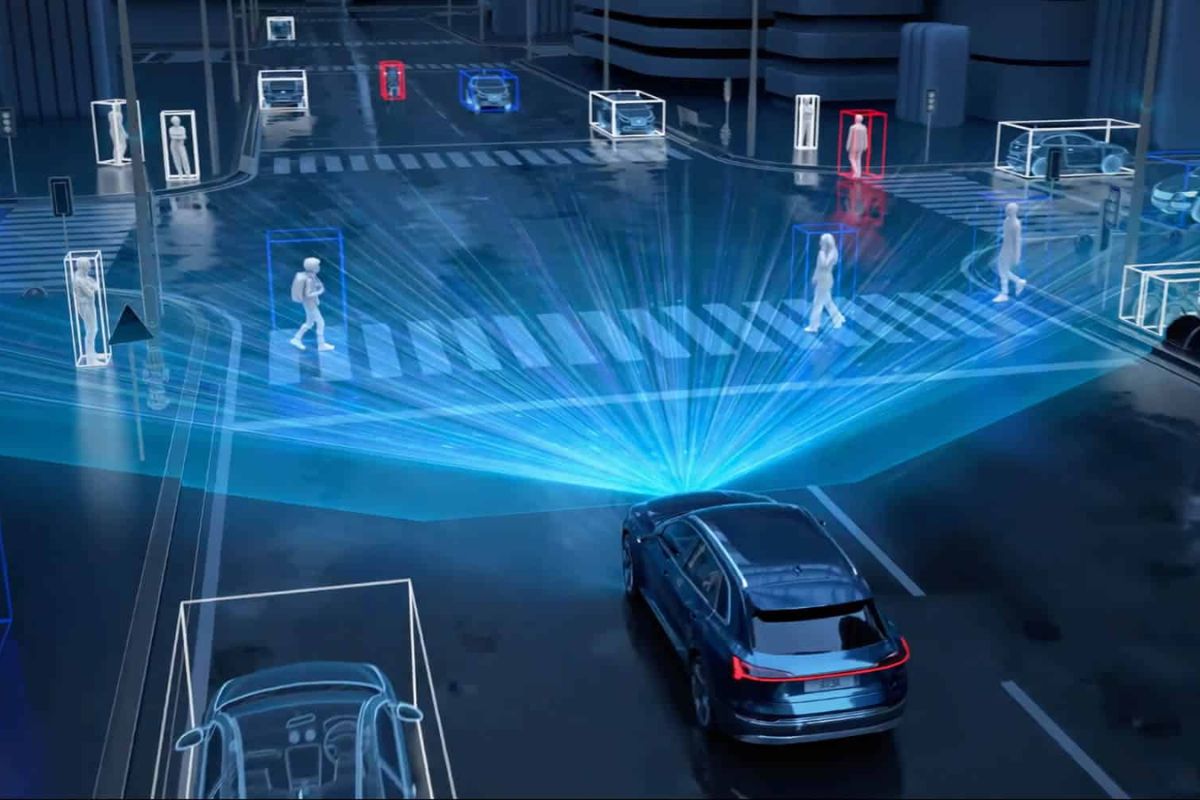Aeva’s Lidar Technology: The collaboration between Aeva Technologies and Daimler Truck, with a staggering $1 billion deal, marks a significant milestone in the advancement of self-driving trucks. At the heart of this partnership lies Aeva’s lidar technology, which promises to revolutionize Daimler’s autonomous fleet by enhancing its perception capabilities.
As the demand for autonomous trucking continues to grow, Daimler Truck’s strategic goals align perfectly with the efficiency gains and highway autonomy that Aeva’s lidar technology brings to the table.
However, as with any emerging technology, setbacks and challenges are inevitable. In this discussion, we will explore the immense potential of Aeva’s lidar technology and how it powers Daimler Truck’s billion-dollar autonomous vision, while also considering the hurdles that lie ahead.
Key Takeaways
- Aeva Technologies has secured a $1 billion deal with Daimler Truck to provide lidar technology for their autonomous vision.
- The collaboration aims to develop self-driving trucks for U.S. roads by 2027, with revenue expected to begin this year and production scheduled for 2026.
- Aeva’s lidar sensor technology accurately detects the speed of distant objects, enhancing the safety and efficiency of Daimler Truck’s autonomous fleet.
- Autonomous trucking offers cost predictability, optimizes efficiency on highway segments, reduces accidents caused by human error, and aligns with the demand for efficient and safe transportation.
What is the vision of Daimler trucks?
At Daimler Truck Asia, our vision is to create mobility solutions that enhance the quality of life for both people and the planet.
What is LiDAR sensor used in autonomous vehicle for the identification of?
Light Detection and Ranging (LiDAR) sensors play a crucial role in object detection and distance estimation, particularly in the advancement of automated driving.
Also Read: Tesla Cybertruck Safety Concerns: Unveiling the Risks Behind the Revolutionary Design
Aeva Technologies Secures $1 Billion Deal with Daimler Truck: Driving the Future of Self-Driving Trucks
Aeva Technologies has secured a groundbreaking $1 billion deal with Daimler Truck, paving the way for the future of self-driving trucks and revolutionizing the automotive industry.
With this collaboration, Aeva’s cutting-edge lidar technology will power Daimler Truck’s autonomous vision, propelling the development of self-driving trucks that are set to hit U.S. roads by 2027. Lidar sensors are essential for enhancing a vehicle’s perception of the road by accurately detecting the speed of objects in the distance.
This deal signifies a significant leap forward in the advancement of autonomous driving technology and solidifies Aeva’s position as a leader in the industry. While specific details about the duration of the deal and the number of sensors per truck are undisclosed, Aeva anticipates revenue to commence this year, with production scheduled for 2026.
The partnership between Aeva Technologies and Daimler Truck is a game-changer, representing a major step towards a future where self-driving trucks dominate the transportation industry.
Lidar Sensors at the Core: Aeva’s Technology to Enhance Daimler Truck’s Autonomous Fleet
At the core of Daimler Truck’s autonomous fleet, Aeva’s lidar sensor technology takes center stage, revolutionizing the trucking industry with its critical capability to detect the speed of distant objects.
This partnership between Aeva Technologies and Daimler Truck is set to enhance the autonomous fleet by providing advanced sensor technology that ensures safety and efficiency on the road.
Aeva’s lidar sensors are specifically designed to detect the speed of distant objects, a crucial feature for autonomous vehicles to navigate through complex environments.
By incorporating Aeva’s technology into Daimler Truck’s Freightliner Cascadia truck platform, equipped with self-driving technology from Daimler’s Torc Robotics unit, the goal of deploying autonomous trucks on U.S. roads by 2027 becomes closer to reality.
With Aeva’s lidar sensors at the core, Daimler Truck’s autonomous fleet is poised to deliver a transformative impact on the trucking industry.
The Business Case for Autonomous Trucking: Daimler Truck’s Vision and Strategic Goals
Daimler Truck’s ambitious vision for autonomous trucking is driven by strategic goals aimed at revolutionizing the industry and maximizing efficiency on long-haul routes. The business case for autonomous trucking is compelling, with several factors contributing to its appeal:
- Cost Predictability: Autonomous trucks offer precise cost predictability for long-haul trips, allowing businesses to calculate expenses associated with human drivers for specific routes. This enables better financial planning and budgeting.
- Enhanced Efficiency: By leveraging lidar technology from Aeva, Daimler Truck aims to optimize efficiency on lengthy highway segments. This technology allows for real-time data collection and analysis, enabling trucks to navigate complex road conditions and traffic patterns with ease.
- Safety and Reliability: Autonomous trucking holds the promise of significantly reducing accidents caused by human error. With advanced sensing capabilities, self-driving trucks can react faster and make more accurate decisions, enhancing overall safety on the roads.
Daimler Truck’s strategic goals align with the growing demand for efficient, cost-effective, and safe transportation solutions, making autonomous trucking a promising venture for the future.
Highway Autonomy and Efficiency Gains: Aeva’s CEO Emphasizes the Strategic Partnership
The strategic partnership between Aeva and Daimler Truck highlights the significant gains in efficiency and autonomy that can be achieved on the highway. Aeva’s CEO, Soroush Salehian, emphasizes the clarity of the business case for highway autonomy and the potential efficiency gains it offers.
By leveraging Aeva’s lidar technology, Daimler Truck aims to advance its ambitious vision of deploying self-driving trucks within the next six years. This collaboration aligns with the broader trend in the industry, showcasing the strategic importance of lidar technology in realizing autonomous commercial vehicles.
With highway autonomy, trucks can operate more efficiently, reducing fuel consumption, minimizing traffic congestion, and increasing overall productivity.
The partnership between Aeva and Daimler Truck signifies a collective effort to revolutionize the trucking industry and pave the way for a future of safer, more efficient, and fully autonomous transportation.
Despite the challenges faced by the autonomous driving landscape for passenger vehicles, the future of autonomous trucking continues to navigate setbacks while embracing progress. The industry’s determination to overcome obstacles and push forward is evident in the strategic partnership between Aeva Technologies and Daimler Truck. This collaboration not only highlights the unwavering interest in autonomous commercial vehicles but also signifies the industry’s commitment to developing safe and efficient self-driving technology for the transportation sector.
To evoke an emotional response in the audience, consider the following:
- Resilience: Despite setbacks, the autonomous trucking industry remains resilient, determined to overcome obstacles, and forge ahead.
- Innovation: With each setback, the industry is driven to innovate and find solutions, pushing the boundaries of self-driving technology.
- Potential: Autonomous trucking holds immense potential, promising increased safety, efficiency, and reduced environmental impact, making it an exciting prospect for the future.
As the industry navigates setbacks and embraces progress, it is clear that autonomous trucking is poised to revolutionize the transportation sector. It brings us closer to a future of safer, more efficient, and sustainable commercial transportation.
Conclusion Of Aeva’s Lidar Technology
Aeva Technologies’ lidar technology has paved the way for a groundbreaking partnership with Daimler Truck, enabling the future of self-driving trucks.
By integrating Aeva’s advanced sensors, Daimler Truck aims to enhance the autonomy and efficiency of their fleet, aligning with their strategic goals.
This collaboration signifies a significant step forward in the development of autonomous trucking, despite the challenges that may arise.
With this partnership, the industry is poised to embrace progress and revolutionize the future of transportation.
Our Reader’s Queries
What is the range of Aeva LiDAR?
Atlas, powered by Aeva’s one-of-a-kind Frequency Modulated Continuous Wave (FMCW) 4D LiDAR technology, is the ultimate solution for highway-speed driving. With a remarkable 25% increase in detection range for low-reflectivity targets, Atlas can detect objects up to 500 meters away, providing unparalleled safety and security on the road.
What is the difference between 4D LiDAR and 3D LiDAR?
The 4D LiDAR is equipped with a camera, in addition to all the features of the 3D LiDAR. This camera captures real-time images with depth perception in every pixel, resulting in highly precise data.
Where is Aeva LiDAR headquarters?
AEye, the Bay Area’s leading artificial perception pioneer, has just unveiled its brand new headquarters at 1 Park Place in Dublin, California. This state-of-the-art facility is set to revolutionize the industry and cement AEye’s position as a true innovator in the field. With cutting-edge technology and a team of experts at the helm, AEye is poised to take the world by storm. Join us as we embark on this exciting new chapter in our journey towards a brighter, more intelligent future.
What is a 4D LiDAR?
Aeva’s 4D LiDAR sensors have a unique ability to detect instant velocity along with 3D position. This feature enables autonomous devices such as vehicles and robots to make smarter and safer decisions. With Aeva’s technology, these devices can operate with greater precision and accuracy, ensuring a safer and more efficient experience for all.




